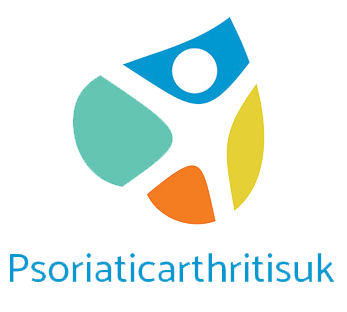What Is Psoriatic Arthritis and What Does It Feel Like
Psoriatic arthritis is a chronic inflammatory joint disease (arthritis) associated with psoriasis.
Patients suffer both painful inflammation of the joints or spine and pathological lesions of the skin or nails (psoriasis). Up to 15% of people with psoriasis develop psoriatic arthritis.
Psoriatic arthritis is an autoimmune disease belonging to the group of spondyloarthropathies (such as Bechterew’s disease). Spondylitis is a chronic inflammatory disease of the spine and joints.
Psoriatic arthritis is a chronic inflammatory rheumatism (RIC), characterized by inflammatory pain (nocturnal awakening, important morning rustling, worsening of resting symptoms).
This inflammatory rheumatism can affect different osteo-articular areas:
The entheses: the entheses are the points of insertion of the tendons and ligaments in the bone;
The joints: the joints will be the seat of inflammation (swelling, redness, joint pain) corresponding to arthritis when the joint is inflated.
Spine: The spine can be reached in the form of neck pain or back pain and / or inflammatory lower back pain.
The dactylites: the dactylites correspond to an attack of a finger or a toe which will be the seat of an intense swelling touching the three articulations (distal articulation, proximal but also the metacarpo or metatarsophalangeal) resulting in a toe or sausage finger.
These four facets of inflammatory rheumatism are associated with damage to the skin or nails characteristic of psoriasis.
Causes
The causes of psoriatic arthritis are not known. Bacterial or viral infections are mentioned as triggers. Genetic predispositions may also play a role.
Symptoms
Psoriatic arthritis combines the symptoms of cutaneous psoriasis and nail psoriasis with chronic inflammation of the joints, tendons and spine.
The joint and cutaneous lesions are not necessarily simultaneous. Most of the time, psoriasis precedes inflammation of the joints and the spine. In rare cases, the symptoms of both diseases occur at the same time. In 10% of patients, symptoms affecting the joints or the column appear before the cutaneous involvement, which can be discreet and affect only the scalp or the gluteal groove.
No link has been established between the severity of psoriasis and the extent of joint or spine involvement.
This arthritis can affect all joints, but it most often affects the large joints of the lower limbs, the joints of the fingers and toes, the back and the pelvis:
The inflammation of all the joints and phalanges of the fingers and toes (to the distal interphalangeal joint at the end of the finger), giving them the appearance of a sausage is characteristic, but not systematic;
As with rheumatoid arthritis, asymmetric oligoarthritis is common and evolves into distal and symmetrical polyarthritis;
More rarely, the inflammatory affects the spine and pelvis (the sacroiliac joints), as is the case with ankylosing spondylitis;
Psoriatic arthritis sometimes causes episodes of fatigue, anemia and mood disorders.
In the majority of cases, the cutaneous involvement precedes the psoriatic arthritis, but the appearance of the cutaneous and articular attacks can be simultaneous. More rarely, joint damage is manifested first. It is important to note that psoriatic arthritis can occur in people without psoriasis (it is usually observed that the parents are affected). The diagnosis is sometimes difficult to establish, the symptoms sometimes guiding the doctor, wrongly, to other types of rheumatism such as rheumatoid arthritis or gout.
Psoriatic Arthritis Is relatively common and treatments have changed significantly in recent years. New therapeutic options are available and other targets are being evaluated. The heterogeneity of patients and their clinical presentation, the ever-increasing supply of treatments, their side effects and their cost require the use of specialized follow-up by the rheumatologist and the dermatologist. Collaboration with the internist-generalist physician is necessary, particularly in the detection of this disease and in the context of immunosuppression and co-morbidities (alcohol, cardiovascular risks).
Sports and physical activities help prevent stiffening of the joints and preserve muscle mass. Heat, cold and ultrasound treatments are used to relax muscles and combat pain and inflammation. Targeted physiotherapy can strengthen periarticular structures, especially around the knee, hip and spine.
Including certain foods on your diet, such as fish fats (omega-3 fatty acids) that have a beneficial effect on joint inflammation. In contrast, alcohol can strengthen joint and skin symptoms.
